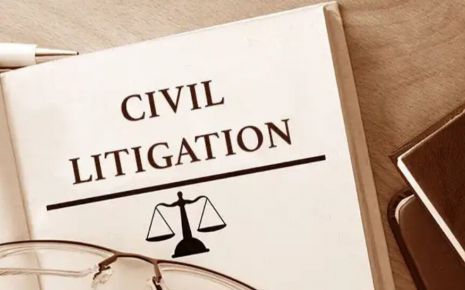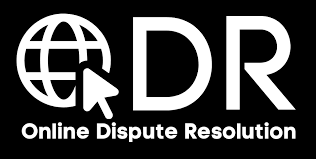The State And Its Mystified Interpretations
The State and its Mystified Interpretations:
"Ever since the discourse on state began, it had been a difficult task for the academicians to demarcate its boundaries. It is futile to depict the state in a defined framework. Its boundary with society is ill-defined, permeable, and fluid. Investigating the nature of the state and how it affects the individual rights has been done before. There is a significant corpus of writing in history, philosophy, and political science that examines and ponder about the same.""The deliberation took place in the post-war period offered two ideas. First was to abandon the state as a concept too narrow or too wide to be in the framed of general science of politics, hence it was replaced with political system." But the change in vocabulary failed to solve the issue."
Since the late 1970s, the second solution has been to "bring the state back in." However, the literature has mostly avoided the likelihood rather than tackling the challenge of finding the illusive line between the two.
It has done this by reducing the state to a subjective system of decision-making, which is demonstrably idealistic and excessively narrow.
Abandoned idea of state:
"The nature of the differences between the two consecutive approaches to the state's dilemma have been the subject of acrimonious debate between their proponents. When Easton, Almond, and other scholars dropped the word "state" from their political lexicon in the 1950s, it wasn't because they believed that political analysis should shift its emphasis from the state to society, but rather because they felt that the word itself had two related flaws: its meaning was ambiguous, leading to disagreement about exactly what it referred to; and moreover, even if consensus could be reached, the term left out crucial elements of the political process.""Several reason can be ascertained for abandoning of the state concept to the massive political mobilisation that occurred in the West in the nineteenth and twentieth centuries, as well as to the growth of governmental and extrastatal political institutions like parties, interest groups, and the media that are situated on the shaky border between society and state and are not necessarily covered by the latter."
Instead of replacing the larger but clearly defined borders of a self-contained system with the challenge of the uncertain boundary between state and society, the systems approach simply expanded the very space of the boundary into an infinite and undefined terrain.
The Subjective idea
"The core of the statist perspective, according to Nordlinge: The argument used to support the "emphasis on individuals" over institutionalized structures in the study of the state is that institutions do not have preferences or act on them; rather, they merely influence the way individual officials act. Furthermore, because the scope of this influence varies across states, it is claimed that it cannot be included in a definition of the state. Even if one agrees with these ideas, they all hinge on the original choice to view preferences as the fundamental aspect of the state".
"As an initially subjective entity made up of unique preferences, ideas, decisions, and other ideational phenomena�a person in broad strokes�the beginning point establishes the character of the state. The existence of thoughts and desires, in our everyday sense of personhood, gives the human being the appearance of being a self-formed and distinct entity."
"According to Krasner and Nordlinger, the state's purported autonomy is mostly generated definitionally. The fascinating subject of study is condensed to something called policy, which refers to the intentions and preferences of particular state officials. The national interest is defined as the state's disembodied ideality, which is analysed as a self-generated and ruling ideality rather than merely a rhetorical effect. Writing of this kind shouldn't be judged by its own scientific assertions. The case studies used to illustrate the notion of state autonomy are skimpy and unsatisfactory interpretations of intricate political situations, as shown by Krasner's examples."
Recent writings by Nordlinger circumvent this issue by containing no case examples at all.
"The goal of most of this writing, according to Almond, is "to demystify the state notion." If true, then this type of writing has to be viewed as a distinct, self-willed thing that is a part of a much wider social process that produces the state's unexplained effects."
Structural Effect
"It is necessary to examine the condition as a structural consequence. That is to say, it should be analysed as the potent, metaphysical consequence of activities that provide the appearance that such structures exist rather than as a real structure. For instance, the border is one aspect of the contemporary state. State practises define and contribute to the formation of a national entity by establishing a territorial limit and exerting complete control over movement across it. A number of very contemporary social actions are involved in setting establishing and policing a border."
Examining how the state appears to be separate from society but still viewing this separation as an internal structure allows one to understand how this is possible. The state's border is only a result of these alterations; it does not really define an edge. It is not an actual object's boundary.
The new approach
"The state should not be taken as a freestanding entity, whether an agent, instrument, organization or structure, located apart from and opposed to another entity called society. The distinction between state and society should nevertheless be taken seriously, as the defining characteristic of the modern political order."
"The state cannot be dismissed as an abstraction or ideological construct and passed over in favour of more real, material realities. In fact, this distinction between conceptual and material, be- tween abstract and real, needs placing in historical question if we are to grasp how the modern state has appeared."
"For the same reason, the prevailing subjectivist view of the state as essentially a phenomenon of decision making or policy is inadequate. Its focus on one disembodied aspect of the state phenomenon assimilates the state-society distinction to the same problematic opposition between conceptual and material."
"The state should be addressed as an effect of detailed processes of spatial organization, temporal arrangement, functional specification, and super- vision and surveillance, which create the appearance of a world fundamentally divided into state and society. The essence of modern politics is not policies formed on one side of this division being applied to or shaped by the other, but the producing and reproducing of this line of difference."
"These processes create the effect of the state not only as an entity set apart from society, but as a distinct dimension of structure, framework, codification, planning, and intentionality. The state appears as an abstraction in relation to the concreteness of the social, and as a subjective ideality in relation to the objectless of the material world. The distinctions between abstract and concrete, ideal and material, and subjective and objective, which most political theorizing is built upon, are them- selves partly constructed in those mundane social processes we recognize and name as the state."
Article 12
Fundamental Rights are claimed mostly against the "State". Article 12 gives an extended significance to the term 'State' occurring in Article 13(2), or any other provision. Fundamental Rights, has an expansive meaning.
According to Article 12, the term state includes:
- The government and Parliament of India
- The government and the legislative of State
- All local authorities and
- Other Authorities within the territory of India, Or under the control of Central Government.
Jurisprudence over the term Other Authorities:
- In the University of Madras V. Shanta bai [2]the idea of Esjudem Generis was
laid down. Madras.
The Madras High Court ruled that other authorities in this case could only refer to other authorities of a similar character; for instance, if ejusdem generis were to be interpreted in this way, it could only refer to authority performing governmental or royal Functions. It cannot include entities like universities unless they are supported by the State, whether they are natural or legal people. However, in Ujjammbai v. State of U.P., the court rejected the Madras High Court's narrow interpretation of the phrase "other authorities" and declared that the ejusdem generis rule could not be reinstated when interpreting this phrase.
The government of the Union and the States, the legislature of the Union and the States, and local authorities are particularly mentioned in article 12. These named bodies do not have a common genus, nor can they be logically lumped together into a single category.
The To and FRO movement between Structuralism and Functionalism Approach
- Later in the case of Rajasthan State Electricity Board V. Mohanlal,[3]
In his ruling, Justice Shah referred to the two structural phenomena of "Statutory" existence and "Power to Punish" as the "virtue of the Sovereign." These structural phenomena set forth the starting principles for determining the mantle of the "State." It's interesting to note that the RSEB's directive remained a beacon of light until 1975. However, a key issue that the ruling resolved was the judges' concern with the idea of a sovereign state, and it was noteworthy to note that the verdict appeared to be contextualised in the original concept of a nation-state and lingered around the idea of sovereign authority.
However, given the potential role change that had begun to emerge in the Indian market environment in the late 1970s and early 1980s, the judgement does not appear to be one that can be sustained.
- Sukhdev Singh v. Bhagatram[4]
"Three sets of Judgements that emerged as a result of the judges having their own sets of opinion about the concept of what could be termed as a "State". The Majority of CJ Ray, J. Chandrachud and J. Gupta in this constitutional bench decision that also consisted of J. Mathew and J. Algiri Swami, partly agreed with the concept of statue and constitutionally created authorities."[5]
In this case SC following the test laid down in RSEB case has held that ONGC, LIC and Industrial Finance Corporation are authorities within the meaning of Art. 12 of CoI and therefore they are 'State'. All three statutory corporation have the power to make regulation under the statue for regulating condition of services of their employees.
J. Mathew quoted in his judgement that "A finding of state financial support plus a unusual degree of control over the management and policies might lead one to characterize an operation as state action."
He further added that the developing idea, he said, appears to be that a public company that serves as an instrumentality or agency of the "State" is subject to the same constitutional restraints as the "State" itself. The significant idea was of the entities discharging functions of High Public Importance.
Thus, it can be seen that Justice Mathew is referring to the involvement factor of state in an entity to find whether it will fall under the definition of Art. 12.
- Sabhajit Tewari v. UOI[6]
The court established the rule that a body must be a statutory entity in order to be considered a state under Article 12; mere control or financial support from the federal government is insufficient.
The court ruled that non-statutory organisation employees who are registered under the Societies Registration Act of 1860 and the Companies Act of 1956 are not entitled to the same protections as government workers under Article 311 of the constitution. In these situations, the firms were deemed to have autonomous existences from both the government and corporate law. These could not be considered government departments.
The court ruled that because the "Council" is not covered by Article 12 of the constitution, the petitioner's claims that Article 14 of the constitution was violated could not be granted.
- Ajay Hasia v. Khalid Mujib [7]
Even at the peak of the functionalist phase the court failed to provide the much-required doctrinal transition from a structuralist to a more expansive functionalist test. The judgement laid down the following ideas:
- The principle of Juristic Veil was introduced.
- A conceptual rational for "the agency or instrumentalities approach".
- The idea of deep pervasive control of the government behind the formal ownership cast in corporate mould.
The following six principles are as follows:- Entire share capital owned by government
- Financial assistance from the state meets almost entire expenditure of corporation
- Monopoly status conferred or protected by the state
- Deep and pervasive state control
- Functions which are of High public importance
- A government dept. transferred to a corporation.
- Pradeep Kumar Biswas v. Indian Institute of Chemical Biology[8]
The Judgement formally overruled the judgement of Sabhajit Tiwary. It narrowed down the test laid down for agency or instrumentalities. It conceptualised the idea that a body would qualify as a 'State' under Art. 12 where it was 'financially', 'functionally' and 'administratively' dominated by or under the government control.
- The case show cased the Court's inclination towards structuralist perspective.
- Now body had to meet the governmental dominations on all the three fronts.
- Sealed the future of an open-minded functionalist inquiry by completely ignoring the trapping of the state framework applied there, decided by 7 judge benches.
- Ignored the test of Art.12, distinguishing between local or other authorities with the territory of India.
- Zee Telefilms ltd. v. Union of India [9]
The Supreme Court's five-judge constitutional bench, which was made up of Justices N. Santosh Hegde, S. N. Variava, B. P. Singh, H. K. Sema, and S. B., determined the matter. Sinha.
Even though BCCI had a monopoly over cricket control, the state neither granted it to it nor provided any legal protection for it, according to the court.
The court also determines that BCCI is not owned by the state and is financially independent of it. With all of these points being made, the court decides it is unnecessary to address the claim that the defendants infringed the petitioner's basic rights.
The board represented the Indian government to the world community, according to Justice Sinha's only dissenting judgement.
The Supreme Court has reiterated its earlier, well-established decisions in Sabhajit Tewary v. UOI and Pradeep Kumar Biswas v. Indian Institute of Chemical Technology through this five-judge panel, removing all doubt about how to interpret the term "state" within the context of Article 12 of the constitution.
Is Judiciary a State?
The term "judiciary" is not clearly defined in Article 12 of the Constitution. This grants judicial officials the authority to issue judgments that may violate an individual's fundamental rights. According to the article, if it were placed under the control of the "State," it would be required that people' fundamental rights not be violated. As a result, it is not possible to dispute court decisions on the grounds that they infringe someone's basic rights. However, it has been noted that administrative orders issued by courts, including the Supreme Court, have frequently been contested as being in violation of basic rights.
The contrast between the judicial and non-judicial activities of the courts provides the solution to this query. The courts are considered "states" when they carry out their non-judicial duties. The courts would not be considered "states" while they carry out their judicial duties.
Naresh Sridhar Mirajkar v. State of Maharashtra[10]
It is now a well-established principle of Indian law that the Supreme Court of India does not have the jurisdiction to grant a writ of certiorari to a High Court or another bench of the same Court under Article 32 unless the judgement is ultra-vires. Because learned courts only give orders after thorough consideration and an aggrieved party always has the opportunity of appealing, the majority's decision in this instance was accurate. Therefore, the question of issuing a writ of certiorari only comes up in rare instances.
"It was held that there was no violation of fundamental right even if a court is the 'State' under Article 12, a writ under Article 32 can't be issued against the HC or court of competent authority against its judicial orders because such charges can't be said to violate the fundamental rights."[11]
Ujjjam Bai v. State of U.P.[12]
In this case it was held that a quasi-judicial or judicial body in exercise of its function couldn't violate fundamental rights therefore, a writ of certiorari can't be issued against a High Court. The Court determined that under Article 32 it would overturn a quasi-judicial body's decision affecting a citizen's fundamental rights if the quasi-judicial body is acting under an ultra-vires law, lacks the authority to enact such a law, fails to follow the principle of natural justice, or fails to follow the mandatory procedural requirements outlined in the applicable Statute.
A.R. Antualy v. R.S. Nayak [13]
This judgement is almost on the same lines as the Ujjjam Bai as far as its outcome is relevant. That if court can violate the rights of an individual.
The judiciary can neither increase nor decrease a court's jurisdiction; it can only interpret the statutes. In this case, a court's approval is irrelevant since the courts cannot override legislative decision-making. Along with the authority to establish and broaden jurisdiction, the legislature also has the authority to grant or revoke an appeals right to a specific court. No court, whether superior, lower, or both, may extend the court's jurisdiction or deprive a person of their rights to review and appeal. Only the Parliament has the authority to accomplish this by legislation.
Rupa Ashok Hurrah v. Ashok Hurrah [14]
SC reaffirmed and ruled that no judicia proceedings could be said to violate any fundamental rights. When the court perform administrative function, they are state and the same courts while delivering justice to the large or while performing judicial function they are not state.
"Institutional remedy of a curative petition in all cases where the pertitioner has been denied a hearing or the judge is biases, was created.
It was further clarified that a writ under Article 32 shall not lie from the SC to the HC or from on HC to another as no judicial order passed by any superior court in judicial proceedings can't violate the fundamental rights." [15]
Conclusion
The state can't be restricted to a mere definition. The meaning of states changed over decades from mere a structure to a welfare state for the political science discipline. The reason being the dynamic societies as the societies evolve so as idea of state.
But for the point of view of legal justice, the definition of state has turned manier folds beginning from a simple structuralist idea to more complex functionalist aspects. The jurisprudence over the idea of state is ever growing due to legal interpretations according to the existing societal circumstances. Today we rest upon the idea of state to a structural framework laid down in the case of Ajay Hasia and Pradeep Kumar Bishwas.
Law Article in India
Legal Question & Answers
Lawyers in India - Search By City
LawArticles
How To File For Mutual Divorce In Delhi

How To File For Mutual Divorce In Delhi Mutual Consent Divorce is the Simplest Way to Obtain a D...
Increased Age For Girls Marriage

It is hoped that the Prohibition of Child Marriage (Amendment) Bill, 2021, which intends to inc...
Facade of Social Media

One may very easily get absorbed in the lives of others as one scrolls through a Facebook news ...
Section 482 CrPc - Quashing Of FIR: Guid...

The Inherent power under Section 482 in The Code Of Criminal Procedure, 1973 (37th Chapter of t...
The Uniform Civil Code (UCC) in India: A...

The Uniform Civil Code (UCC) is a concept that proposes the unification of personal laws across...
Role Of Artificial Intelligence In Legal...

Artificial intelligence (AI) is revolutionizing various sectors of the economy, and the legal i...








Please Drop Your Comments